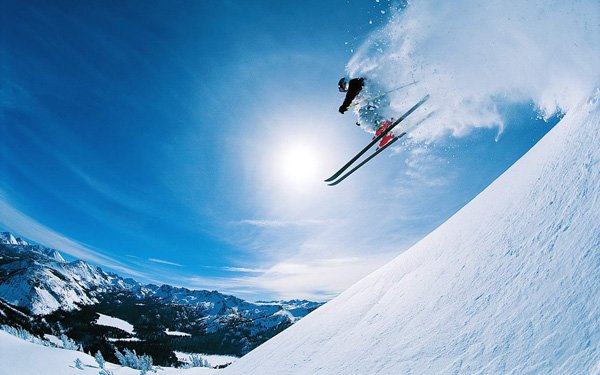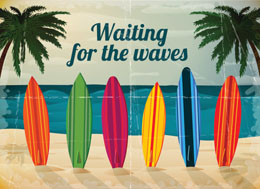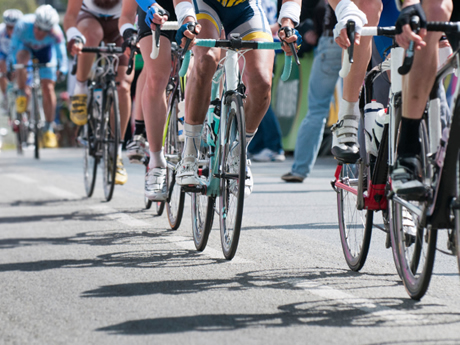Australian Salmon are not a true salmon. They are actually a member of the perch family. It was Captain James Cook that called them salmon when he first saw them, due to their resemblance to the salmon found in the northern hemisphere.
The Australian Salmon grows to around nine kilos, near enough to twenty pounds. They are found right around the bottom half of Australia, including Tasmania, from Western Australia to New South Wales. There are two sub-species, the Eastern Australian Salmon and the Western Australian Salmon. Identical in appearance, it is the western sub-species, found in South Australia and Western Australia, which grows to the larger sizes.

Salmon were an important commercial species used mainly for pet food and bait for lobster pots, but their commercial value has decreased over the last couple of decades. This has proven to be a boon for recreational anglers as salmon numbers have increased in some areas due to the reduced netting of the species.
Salmon are a very important recreational species for anglers in the southern states of Australia. Targeted mainly in the surf, they are exceptional fighters and continuously jump out of the water in attempts to throw the lure or bait. South Australian anglers look forward to winter, migrating to surf beaches all over the state to target the schools of fish.
More recently, the popularity of artificial baits has seen an increase in the number of anglers chasing salmon on light gear from boats or the shore. Smaller salmon, often referred to as salmon trout or just trout, venture into estuary and salt water river systems. Like the adults, these juvenile salmon fight very well when targeted with very light tackle.
Autumn and winter are the months when salmon are most prevalent but they can be caught all year round.
Here in South Australia, the smaller salmon school around metropolitan Adelaide’s shoreline, particularly along break walls and in the Port River Estuary. They have become very popular targets since the advent of soft plastic type lures, with Berkley and Squidgies manufacturing several styles of soft plastics that work well on smaller salmon. Early morning run out tides are generally the best, although a rising tide that coincides with sunset is also productive. Light line is best, with braid now used almost exclusively. Breaking strain from four to eight pound is sufficient for these smaller fish, together with a leader at least six foot long. The leader can be either mono or fluorocarbon a little heavier than your main line. A graphite rod around seven feet and a spinning reel in the small (2000) size will do the job. The light gear ensures you are able to cast the light soft plastic lures a reasonable distance. Jig heads should be as light as possible and hook size around number 4. On calm days with negligible tidal influence it’s possible to go down to a jig head weighing as little as 1/32 of an ounce – about a gram. These smaller fish generally weigh less than a kilo (2.2 pounds).
The adult salmon are a different proposition. Recently fish around the twenty pound mark have been caught from the waters surrounding one of South Australia’s offshore islands. The anglers were targeting kingfish using live baits. These monster salmon have grabbed the live baits and, even on the heavy game fishing gear, have given a good account of themselves. Fish this size are not common however, although it’s only a matter of time before one of these giants’ grabs a surf fisherman’s lure or bait.
Surf fishing for salmon is probably one the best angling scenarios you can experience. Dawn and dusk are the prime times and the surf beaches are magical places to be at this time of day. It is not uncommon if fishing the more remote coasts in winter, to have the entire beach to yourself.
Names like Locks Well, Almonta, Sheringa, Browns Beach, Parsons Beach and Waitpinga are synonymous with salmon fishing in South Australia. Locks Well, Sheringa and Almonta in particular still produce the goods today, whilst the others mentioned are not quite as productive as they used to be, but still produce fish.

All these beaches have one thing in common; gutters or reefs where the fish congregate to feed. Browns Beach on Yorke Peninsula is unique in that it consists of two lagoons. A reef separates both lagoons from the open ocean. On high tides, schools of salmon come over the reef to feed on baitfish in the lagoons. The other beaches mentioned are open to the full influence of the ocean, so deep gutters and holes are formed by the continual movement of sand and water.
On arriving at your chosen beach, the first thing to do is survey the beach from a high vantage point. This is easy to do on most surf beaches as the access point to most is on the cliffs or dunes overlooking the beach. Schools of salmon will sometimes be visible. These schools look like dark patches of weed, but a little observation will show them moving up or down the beach. If these schools are within casting distance, grab your rod and throw a lure out near the school. A hook up is virtually guaranteed.
If no schools are visible, you can either choose a likely looking gutter and fish it with baits or walk along the beach casting lures to any likely looking holes or gutters. The latter method used to be very tiring. Pelting out 60 gram (2 ounce) lures using a 12 foot surf rod was hard work and, if no fish were located relatively quickly, your enthusiasm waned. Thankfully, technology has come to the rescue of the surf angler. Many anglers now utilise the shorter, stiffer graphite spinning rods. Most are either 8 or 9 feet in length, rated for lines between 10 – 15 lb. Coupled with a medium size spinning reel, around the 4000 or 4500 mark and loaded with 15 – 10 lb braid, they cast much farther than the old fibreglass, 12 foot pole. The shorter length is not a disadvantage at all and the rods are easily strong enough to subdue any salmon you are likely to hook. (Except if you hook one the 20 pounders). If using a similar set up, be sure to use a fairly long wind-on leader of say around 20lb. This can be mono or fluorocarbon. It provides a little bit of cushioning in the way of stretch and assist in landing the fish. This whole outfit is extremely light and allows you fire out 35 – 40 gram (1 – 1/5 ounce lures) all day without tiring.
If using bait, then the best is, without doubt, the pilchard. Also called West Australian Pilchard or sardine, these little bait fish will catch almost anything and salmon love them. Rigged whole on ganged or snelled 4/0 hooks or cut in half and threaded onto a single 4/0, they are the best bait by far. Best fished with the hooks rigged above a sinker (much easier to cast than a running rig) make sure you have enough weight to keep the bait pretty much stationary when it’s being battered around in the surf. Grapnel sinkers are popular but torpedo or snapper leads and ball sinkers also do the job nicely. If holding your rod, you may be surprised by how lightly a salmon, even a good size one will bite. Sometimes a single light tap will be felt. Some anglers prefer to leave their rod in a holder and wait for the salmon to grab the bait and run, and this works when they are really biting well. I can’t help thinking you might miss a few bites like this though.
When you have a hooked a decent size salmon you will certainly know about it. The first run will be a strong one, but not a long one. Several shorter runs will follow and the fish will almost certainly jump at least once. They are masters at throwing the hooks, especially if using lures. One way to combat this is to replace the trebles on your lure with a single hook. It does not seem to affect the hook-up rate and makes releasing the fish much easier. They still manage to throw the single hook at times, but it seems to be less often than the trebles.
Most salmon caught in the surf are released. They are not a first class table fish, although if bled immediately after capture and eaten that same day they come close. Salmon do not keep well and develop a strong “fishy” taste if frozen and thawed. The smaller salmon are very tasty when smoked.
Size limits for salmon apply. Here in South Australia, the bag limits are:
For salmon between 21cm and 35cm – twenty per person per day. For salmon over 35cm – 10 per person per day.
Although catching salmon is great fun, I often wonder if it’s not the location that anglers are attracted too. Here in southern Australia, travelling to the destination can still be an adventure in itself. The wild beaches along the southern coasts are often deserted and it’s possible to fish alone, with your son or daughter, or with a few friends oblivious to anything else. Salmon fishing has a lot going for it.
Choosing the right iPhone 5 sports armband is crucial for convenience and resilience


Bike Racers: Should You Upgrade?

Copyright © www.mycheapnfljerseys.com Outdoor sports All Rights Reserved